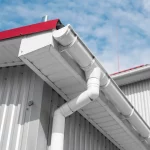A Historical Overview of Roof Tiling in Kent
The long and rich history of roof tiling in Kent dates back to Roman times. The Romans introduced the art of clay tile making, and Kent, with its abundant clay deposits, proved to be perfect for this craft. Over the centuries, roof tiling evolved, reflecting the economic, social, and aesthetic changes experienced by the county. Kentish clay tiles, with their distinguished warm hues and irregular shapes, have become an integral part of the region’s architectural identity.
In Medieval times, Kent became renowned for its unique peg tiles, made from local Wealden clay. The process was laborious, involving shaping, drying, and firing the tiles in traditional kilns. The result was a robust, weather-resistant tile that could withstand the county’s often harsh coastal elements. This practicality, combined with their distinctive aesthetic appeal, made Kent peg tiles highly coveted throughout the British Isles.
With the advent of the industrial revolution in the 18th century, the production of roof tiles in Kent underwent a significant transformation. Machinery replaced manual processes, leading to more uniform, mass-produced tiles. Nevertheless, the traditional Kentish roof tile’s charm remained, offering a nostalgic nod to the county’s rich historical tapestry.
Exploring the Artistry in Kent’s Roof Tiling
Roof tiling in Kent isn’t merely about protection against the elements; it’s an art form that adds character and beauty to buildings. The irregular shapes and rich, warm colours of Kentish tiles deliver a charm that complements the county’s diverse architectural styles. The careful arrangement of these tiles also allows craftsmen to create intricate, visually appealing patterns, adding a unique artistic flair to each building.
Historic techniques such as ‘crow-stepping’— creating a stepped pattern along the gable— and ‘turretting’— applying tiles in a spiral pattern around towers— are a testament to the creativity and artistic skill involved in Kent’s roof tiling. The aesthetic impact of these techniques is undeniable, contributing significantly to Kent’s visual identity.
Furthermore, the use of ‘club tiles’—larger tiles interspersed amongst standard ones— creates a scalloped effect, enhancing the roof’s visual interest. The charming irregularities in shape and colour of these tiles, a result of traditional production methods, add to the aesthetic value, revealing the subtle artistry inherent in Kent’s roof tiling.
Understanding the Craftsmanship of Roof Tiling
Kent’s roof tiling is a testament to the region’s exceptional craftsmanship. From harvesting local clay to shaping tiles and arranging them on roofs, each process requires skill, patience, and an intimate knowledge of the materials. The tiles’ durability and longevity are evidence of this craftsmanship, as many historical buildings in Kent still boast their original roofs, weathering centuries of the British climate.
One particular skill of Kent’s roofing craftsmen is their ability to create complex, decorative patterns using different tile shapes and colours. From simple parallel lines to intricate geometric designs, the variety and creativity of these patterns demonstrate the craftsman’s artistic talent and technical proficiency.
The traditional craft of peg tiling, where tiles are hung on wooden pegs instead of nails, is still practised today. This process requires precision and a deep understanding of how the tiles will weather and age over time. It is this careful attention to detail and respect for traditional methods that set Kentish roof tiling apart.
The Significance of Roof Tiling in Kent’s Architecture
Roof tiling is a defining characteristic of Kent’s architectural landscape. From historic cottages and churches to modern homes and commercial buildings, roof tiles contribute to the region’s unique aesthetic appeal. The distinct red and orange hues of Kentish clay tiles, in particular, have become synonymous with the county’s architectural identity.
Moreover, roof tiles do more than just enhance a building’s appearance. Their functionality is crucial in protecting structures from the county’s often harsh coastal weather, offering durability and resistance against wind, rain, and frost. Therefore, selecting the right tiles and ensuring their proper installation is integral to a building’s longevity and structural integrity.
Finally, the continued use of traditional tiling methods and styles in contemporary Kentish architecture reflects the region’s respect for its heritage. It’s a testament to the enduring appeal and value of historic roof tiling craftsmanship, seamlessly blending the old with the new.
Traditional Roof Tiling Techniques in Kent
Traditional roof tiling techniques in Kent are a combination of art and craftsmanship. ‘Peg tiling’ is one such technique, where tiles are hung on wooden pegs inserted into holes in the tile, instead of being nailed. This technique, which requires skilled hands and an understanding of balance and weight distribution, is still used today, albeit in a more limited capacity.
Another traditional technique is the use of ‘handmade clay tiles’. These tiles, made from local clay, are shaped by hand, dried, and then fired in a kiln. The handmade process gives the tiles their characteristic irregular shapes and warm, varied hues, contributing to the unique appeal of Kentish roofs.
‘Decorative tiling’ is another traditional technique, where tiles of different shapes, sizes and colours are arranged in decorative patterns. From simple parallel lines to complex geometric designs, these patterns add visual interest and individual character to each roof.
Innovations in Kent’s Roof Tiling Industry
While the industry has maintained traditional techniques, it has also embraced innovative practices. One such innovation is the use of machine-extruded tiles. These tiles, while lacking the handmade character of traditional tiles, offer uniformity and cost-effectiveness. They are perfect for large-scale projects and those that require a more modern aesthetic.
Recycled materials are another innovation in Kent’s roof tiling industry. Eco-friendly tiles made from recycled slate or plastic are sustainable alternatives to traditional clay tiles, offering similar durability and aesthetic appeal. This innovation is a response to growing environmental concerns and the industry’s commitment to sustainability.
Technological advancements have also improved the efficiency and quality of roof tiling. Computer-aided design (CAD) tools allow for precise planning and pattern design, ensuring optimal tile usage and minimising waste. Advanced kiln technology allows for better control over the firing process, resulting in tiles with improved durability and colour consistency.
Iconic Roof Tiled Buildings in Kent
Kent boasts numerous iconic buildings defined by their distinctive tiled roofs. Leeds Castle, with its turret-style roofs adorned with intricately patterned tiles, mirrors elegance and grandeur. Similarly, the 14th-century Igtham Mote, a moated manor house, features a complex roof structure covered in traditional Kentish tiles.
The St. Peter and St. Paul’s Church in Ash showcases an exquisite example of ‘club tiling’. This historic church features a decorative scalloped pattern created with larger ‘club tiles’, offering a visually stunning effect. Similarly, the Kentish barns, with their steeply pitched roofs covered in warm-hued tiles, create a quintessential rural landscape.
Modern buildings in Kent have also embraced roof tiling. The Turner Contemporary in Margate, a modern art gallery, features a sleek, minimalist roof design using machine-extruded tiles, showcasing how traditional materials can be adapted to contemporary architectural styles.
The Future of Roof Tiling in Kent
Despite the changes and innovations in the industry, the future of roof tiling in Kent promises a continued celebration of its rich heritage. Traditional techniques still hold a significant place in Kent’s roofing industry, offering a distinctive charm that modern methods can’t replicate.
However, the industry isn’t resistant to change. The growing demand for sustainable roofing solutions and more efficient production methods is leading to the development of innovative techniques and products. From eco-friendly tiles to advanced design and production technologies, the Kentish roof tiling industry is evolving, blending tradition with innovation.
Ultimately, the future of roof tiling in Kent is about balance— respecting tradition while embracing progress. As long as there is a demand for beautifully crafted, durable roofs, the art and craft of roof tiling in Kent will continue to flourish.








